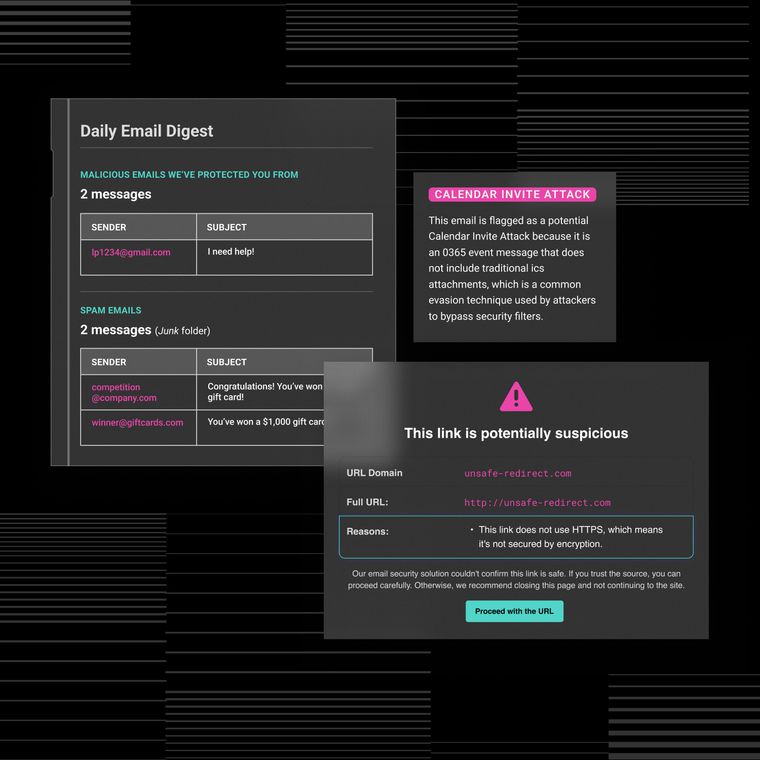Modern Password Cracking Techniques and How to Safeguard Your Organization
Learn top password-cracking methods, real-world risks, and defense mechanisms to safeguard your organization.
June 26, 2025
June 2025 saw the largest data leak in history with 4 billion records exposed, including WeChat data, bank details, and Alipay profiles of hundreds of millions of users, primarily from China. The 631GB database was simply left wide open on the internet with zero protection.
This massive data breach reminds us that while we spend countless hours discussing password complexity and advanced cybersecurity tactics, sometimes the most devastating exposures happen when basic security fundamentals are completely ignored.
What is more concerning is that cybercriminals are now using AI tools, massive password databases, and clever social tricks to break into accounts faster than ever before. In fact, studies show these AI password crackers can break more than 50% of common passwords in under a minute.
Therefore, knowing how these attacks work is critical for protecting your organization using practical defense strategies. Here are some real-world tactics behind modern password cracking and the practical steps you can take to stay ahead of them.
What Is Password Cracking?
Password cracking refers to cyberattacks where hackers systematically attempt to break or guess passwords to gain unauthorized access to systems. These attacks combine automated tools, manual techniques, and increasingly sophisticated AI-powered software designed specifically for breaking passwords. Modern password cracking tools are becoming faster and more efficient thanks to artificial intelligence capabilities.
Beyond direct cracking attempts, attackers steal passwords through various methods including malware that captures keystrokes, physically observing users type passwords, data breaches at third-party services, and specialized credential-stealing malware.
How Does Modern Password Cracking Take Place
Password attacks succeed because they exploit human psychology, not technological weaknesses. While organizations spend millions on advanced security tools, attackers consistently breach systems through predictable human behaviors around password creation and reuse.
Password security begins with understanding how attackers think. When cybercriminals attempt to gain unauthorized access to systems, they know that valid usernames and passwords represent the fastest path to success. Rather than exploiting complex software vulnerabilities, threat actors focus on the human element targeting the weak passwords and poor password security practices that plague most organizations.
Attackers prioritize high-value targets like system administrators whose credentials provide extensive privileges. Once compromised, these accounts enable lateral movement throughout networks while avoiding detection. For the most sensitive accounts such as those of domain administrators, database managers, and other privileged users, a successful breach can be catastrophic for organizations.
They have the following advantages over defenders, making password attacks increasingly effective:
Time and Patience: Unlike defenders who must protect everything simultaneously, attackers can methodically probe systems over extended periods. They employ measured approaches that avoid triggering security alarms or account lockouts.
Advanced Password Cracking Tools: Today's password crackers leverage machine learning and artificial intelligence to optimize attacks. These tools can systematically work through combinations of characters while adapting to avoid detection mechanisms.
Strategic Attack Patterns: Password crackers operate at calculated speeds to circumvent lockout policies, spacing their attempts carefully across multiple accounts. This distributed approach remains effective because most systems don't track password attempts across accounts, allowing attackers to test common passwords against entire user bases without triggering security alerts.
These advantages allow attackers to systematically exploit password vulnerabilities using some popular techniques of password cracking.
Types of Password Cracking Techniques
Password cracking exploiting both technical vulnerabilities and human behavior patterns. From automated brute force attempts to sophisticated social engineering campaigns, attackers employ diverse methods to compromise user credentials across organizational networks. Understanding these attack vectors and implementing appropriate steps is essential for maintaining robust security postures in today's threat landscape.
Here’s a quick list of some of the common types of password cracking techniques:
Brute Force Attacks
Brute force attacks represent the most direct computational approach to password cracking. These attacks systematically test every possible character combination until discovering the correct password. While conceptually simple, modern brute force tools can attempt billions of combinations per second using specialized hardware and cloud computing resources.
The effectiveness of brute force attacks depends heavily on password complexity and length. A six-character password using only lowercase letters can be cracked in minutes, while a twelve-character password with mixed case, numbers, and symbols could take centuries with current technology.
Dictionary Attacks
Dictionary attacks leverage human psychology by testing lists of commonly used passwords, words, and phrases. These attacks exploit predictable patterns in password creation. For instance, people consistently choose passwords based on dictionary words, personal information, or simple modifications of common terms.
Advanced dictionary attacks customize their wordlists based on target reconnaissance. If attackers know employees' names, company terminology, or local cultural references, they can create targeted dictionaries that dramatically improve success rates. Modern tools can apply rule-based transformations, converting "password" into "P@ssw0rd!" or similar variations.
Rainbow Table Attacks
Rainbow table attacks use precomputed databases that map common passwords to their hashed values. When attackers steal password databases, they can instantly identify accounts using common passwords without time-consuming brute force calculations. These tables represent a time-memory trade-off, requiring significant storage but providing near-instantaneous results.
Legacy systems using unsalted hash functions remain particularly vulnerable to rainbow table attacks. Even modern hashing algorithms can be compromised if attackers invest sufficient resources in creating comprehensive rainbow tables.
Social Engineering and Phishing
Phishing attacks bypass technical password protections entirely by tricking users into voluntarily surrendering their credentials. Modern phishing campaigns use sophisticated social engineering techniques, creating convincing replicas of legitimate login pages and crafting urgent scenarios that pressure users into quick action.
Advanced persistent threat groups combine phishing with other techniques, using stolen credentials as entry points for broader network compromise. These attacks often target high-privilege accounts, seeking credentials that provide maximum access with minimal effort.
Keylogging and Malware-Based Attacks
Keyloggers represent a direct approach to password theft, capturing credentials as users type them. Modern keyloggers can be software-based malware, hardware devices, or even browser-based scripts that execute on compromised websites. These tools often operate silently for extended periods, collecting credentials from multiple applications and websites.
Banking trojans and other sophisticated malware combine keylogging with session hijacking, allowing attackers to bypass even strong authentication mechanisms by stealing active session tokens along with passwords.
Credential Stuffing
Credential stuffing attacks automate the testing of previously breached credentials across multiple platforms. Attackers purchase credential databases from underground markets, then use specialized tools to test millions of username-password combinations against target applications. These attacks succeed because users consistently reuse passwords across multiple services.
Large-scale credential stuffing operations can test billions of credential pairs per day, using residential proxy networks to evade IP-based blocking. Even low success rates become profitable when operating at this scale
Password Spraying
Password spraying inverts traditional brute force attacks by testing common passwords against many accounts rather than many passwords against one account. This technique avoids triggering account lockouts while maximizing coverage across an organization's user base. Recent high-profile breaches demonstrate password spraying's continued effectiveness against organizations with weak password policies.
Attackers maintain databases of the most commonly used passwords, testing these against entire employee directories. They space their attempts to avoid detection, often operating across multiple IP addresses and time zones.
To defend against password spraying, deploy behavioral analytics that detect unusual login patterns across the organization. Implement progressive authentication that requires additional verification for login attempts that deviate from established patterns. Password auditing tools can proactively identify and force resets for accounts using common passwords before attackers discover them.
Insider Threats and Privileged Access
Insider threats amplify password-based risks because malicious or negligent employees often have legitimate access to sensitive systems. These threats can involve direct credential theft, abuse of privileged access, or social engineering attacks against colleagues. The trusted nature of insider access makes these threats particularly difficult to detect and prevent.
Privileged accounts represent the highest-value targets for both external attackers and malicious insiders. Compromise of administrative credentials can provide extensive access while avoiding detection through normal security monitoring.
While attackers have industrialized credential theft through automated tools and underground marketplaces, organizations can build comprehensive defenses that make password cracking prohibitively difficult and costly.
How to Build Password Defenses for Your Organization
Effective password defense requires a multi-layered approach that combines technical controls, user education, and continuous monitoring rather than relying on any single protective measure. Organizations must balance security requirements with operational practicality, implementing solutions that address the most common attack vectors while maintaining usability for legitimate users.
Here are some of the effective measures that you can use to safeguard your organization against password cracking:
1. Implement Phishing-Resistant Multi-Factor Authentication
You might think those text message codes you get for two-factor authentication are keeping you safe, but here's the reality: attackers have gotten really good at bypassing them. They can hijack your phone number, create fake websites that capture your codes as you type them, or even convince your phone company to transfer your number to their device. It sounds sophisticated, but it's actually become routine for cybercriminals.
Here's what actually works: security keys like FIDO2 devices. These are small USB or wireless devices that create a unique digital signature proving both who you are and that you're logging into the real website, not a fake one. Even if an attacker has your password and is sitting right next to you watching you type, they still can't get into your accounts without that physical key.
Start with your highest-risk people like executives, IT administrators, and anyone who has access to sensitive systems. Don't try to roll this out to everyone at once, or you'll overwhelm your IT support team. Microsoft has some great deployment guides that show you how to do this gradually. You can also set up adaptive authentication, which only asks for the extra security step when something seems off about a login attempt, like someone trying to access accounts from an unusual location.
2. Modernize Password Storage Architecture
Many organizations are unknowingly using password storage methods from the early 2000s that can be cracked in minutes with today's computers. If your systems are using MD5, SHA-1, or don't add random data (called "salt") to passwords before storing them, you're essentially leaving your front door unlocked. Attackers specifically look for these weak spots because they can quickly access hundreds or thousands of accounts at once.
The solution is upgrading to bcrypt, scrypt, or Argon2 password storage methods. These are designed to be slow and expensive for attackers to crack, making it nearly impossible to break passwords quickly, even with powerful computers. Each password also gets a unique random "salt" that prevents attackers from using those massive lists of pre-computed password hashes they like to use.
3. Watch for Unusual Behavior
Even the strongest password becomes completely useless once an attacker gets their hands on it. The problem is that traditional security tools often miss the subtle signs that an account has been taken over. Maybe someone's logging in at slightly different times than usual, from a new device, or their email forwarding rules have mysteriously changed. These small changes often fly under the radar until it's too late.
This is where behavioral analytics come in. These systems learn how each person in your organization normally works when they log in, what devices they use, which applications they access and automatically flag anything that seems unusual. It's like having a security guard who knows everyone's daily routine and notices when something's off.
4. Standardize Enterprise Password Management
When your employees use the same password for multiple services, you're setting yourself up for a domino effect. One compromised password can lead to attackers accessing dozens of accounts across different systems. People naturally choose passwords they can remember, which often means they're picking from the same pool of common passwords that appear on every attacker's "most likely to work" list.
The solution is implementing enterprise password managers that generate unique, random passwords for every single service. Modern solutions integrate seamlessly with your existing systems, automatically fill in credentials for users, and give you visibility into password practices across your entire organization. Your employees don't have to remember dozens of complex passwords, and you get the security of knowing every password is unique.
5. Monitor Dark Web Credential Exposure
Employee credentials are actively traded on criminal forums and paste sites. The question isn't whether your organization's passwords will appear in breach databases it's how quickly you detect and respond when exposure occurs.
Automate monitoring of credential dumps, underground forums, and paste sites for corporate email addresses. When matches surface, trigger immediate forced password resets and enhanced authentication requirements for affected accounts before attackers can weaponize the credentials.This approach reverses the traditional reactive security model. Instead of waiting for attack attempts, you neutralize compromised credentials before they reach your systems, eliminating the window of vulnerability that attackers depend upon.
Apart from the above measures, you can also take some advanced measures to add an extra layer of security for your organization.
Advanced Measures To Protect Against Password Cracking
Here are some added security measures you can implement in your organization to combat password cracking:
Phase 1: Credential Hardening
Establish password policies that emphasize length over complexity. Enforce 12-character minimums for standard users and 16+ characters for privileged roles. Length defeats brute force and dictionary attacks more effectively than complex character requirements that encourage predictable substitution patterns.
Implement secure storage immediately across all systems. Configure bcrypt or Argon2 with work factors tuned to maintain acceptable login performance while maximizing computational cost for attackers. Generate unique, cryptographically random salts for every password to eliminate rainbow table vulnerabilities.
Secure credential databases through network segmentation, volume encryption, and offline backup strategies. Store privileged service account credentials in dedicated vaults with automated rotation and just-in-time access controls.
Phase 2: Authentication Strengthening
Deploy multi-factor authentication with emphasis on phishing-resistant methods. Prioritize FIDO2/WebAuthn security keys for administrators and high-risk users, followed by authenticator applications for broader workforce deployment. Reserve SMS-based codes exclusively for emergency access scenarios.
Implement adaptive authentication that considers contextual risk factors such as geographic location, device health, access timing to trigger additional verification only when warranted. This approach maintains user experience while strengthening security posture.
Integrate authentication controls with zero-trust architecture principles. Validate every session continuously rather than relying on initial login verification. Apply least-privilege access controls, require re-authentication for sensitive operations, and enforce aggressive session timeout policies.
Phase 3: Monitoring and Response
Establish comprehensive visibility into authentication events through security information and event management integration. Build automated detections for brute force attempts, password spraying campaigns, and credential stuffing patterns that indicate active attacks.
Implement progressive response mechanisms that slow attackers without creating denial-of-service conditions for legitimate users. Deploy temporary account locks, progressive delays, and IP-based rate limiting with careful consideration for user productivity impacts.
Create automated response workflows that terminate active sessions, disable access tokens, and force password resets when attack patterns exceed defined thresholds. Integrate these capabilities with incident response procedures to ensure security teams receive actionable intelligence without manual log analysis.
Phase 4: Education and Governance
Show employees real attack techniques instead of boring policy documents. Use simulated phishing that demonstrates exactly how attackers steal credentials, so people can recognize these tricks in their daily work.
Additionally, conduct quarterly access reviews, automate password changes for service accounts, and detect password reuse across your organization. Replace mandatory password rotations with continuous monitoring. This eliminates predictable patterns while keeping employees productive.
Defend Against Password Cracking with Behavioral AI
Building effective password defenses requires combining technical controls, smart monitoring, and organizational discipline to stop attacks at multiple stages. No single security measure prevents all password attacks, but layered defenses make attackers seek easier targets.
The most effective strategies combine prevention with intelligent detection. While strong passwords and multi-factor authentication create barriers, behavioral analytics provide automated protection that catches compromised accounts faster than manual processes.
Ready to see behavioral detection in action? Book a demo to explore Abnormal’s solutions.
Related Posts
Get the Latest Email Security Insights
Subscribe to our newsletter to receive updates on the latest attacks and new trends in the email threat landscape.


